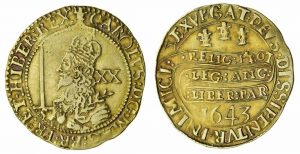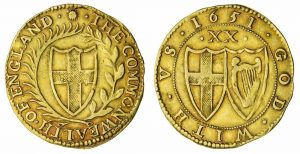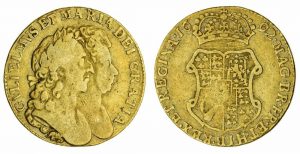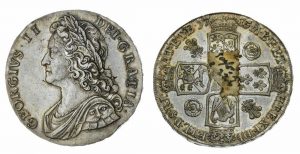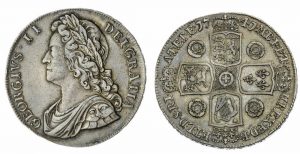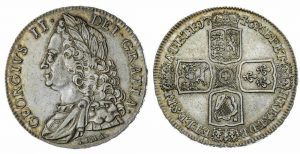Spinks: The Eccles Collection
Spink: The Eccles Collection
Spink held an auction of coins from the Eccles Collection which closed on 29 March 2021. The lots are mainly British hammered and milled coins from Aethelred II to George V. The auction catalogue is available here. Some very good prices achieved throughout the auction.
In addition to the hammer price, there is a Buyer’s Premium of 20% (plus VAT).
Selected lots
Below are my picks from the other lots. A number of the coins in the auction bear provenance marks and I have included a selection of these to tie in with this week’s Quick Quiz #9: Provenance Marks.
All images are © Spink. Click an image to enlarge
Lot 5105, Flemish Ryal (Edward IV)
A continental copy of an Edward IV ryal (rose noble), which are commonly called “Flemish” as it was thought they were struck by Edward during his exile in Flanders. It is now thought that they were struck in mints in the Low Countries.
The composition of these ryals is poor compared to a genuine ryal. For example, the rose on the ship’s side is large and flat.
Estimate: £1,000 – £1,500
Hammer: £2,100
Lot 5144, Charles I Unite
Oxford mint, bearing the Wellington Declaration on the reverse. I wrote about the mint and declaration on a Triple Unite sold by Spink in an auction a few weeks ago, see Spink Numismatic e-Circular 7 Part I
Estimate: £4,000 – £6,000
Hammer: £9,500
Lot 5148, Commonwealth Unite
The largest value hammered coin struck during the Commonwealth, (having not continued with the Triple Unite of Charles I).
They were the first British coins to have legends in plain English, due to the association of Latin with Catholicism.
British trade had been helped by the First Navigation Act of 1651, which led to increased gold coin production in the latter part of that year and onward.
Estimate: £2,000 – £3,000
Hammer: £7,000
Lot 5195, George III Military Guinea
Provenance Marks
The following lots bear provenance marks, which indicate the source of the metal.
Lot 5185, George II Crown
Roses and plumes in the angles indicate that the silver is from the Company for Smelting Down Lead with Pit Coale and Sea Coale.
On 18 December 1705, this company asked for a mark of distinction to be placed on coins struck from their metal “That inasmuch as this Corporation doth make Silver in England and Wales, the Lord High Treasurer be petitioned for Two Roses and Two Feathers Quartered, as the emblems of England and Wales”
In a letter from Queen Anne to “our Trusty and Wellbeloved Sr. Isaac Newton, Master and worker of our Mint” this request was put into action.
Estimate: £1,200 – £1,800
Hammer: £2,400



